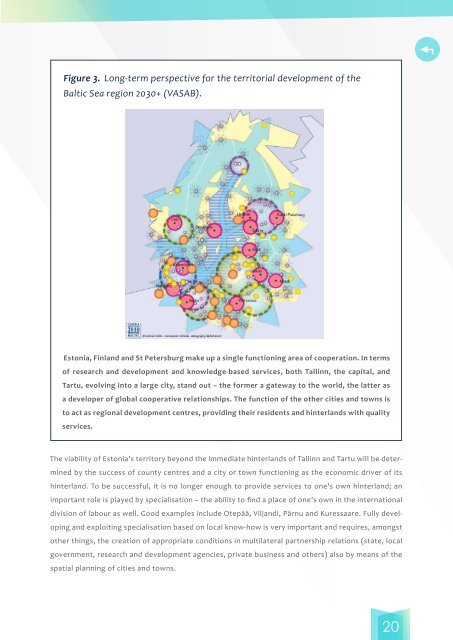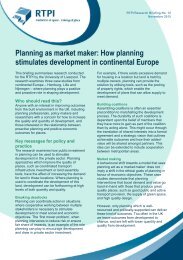estonia-2030_en
estonia-2030_en
estonia-2030_en
Create successful ePaper yourself
Turn your PDF publications into a flip-book with our unique Google optimized e-Paper software.
Figure 3. Long-term perspective for the territorial developm<strong>en</strong>t of theBaltic Sea region <strong>2030</strong>+ (VASAB).Estonia, Finland and St Petersburg make up a single functioning area of cooperation. In termsof research and developm<strong>en</strong>t and knowledge-based services, both Tallinn, the capital, andTartu, evolving into a large city, stand out – the former a gateway to the world, the latter asa developer of global cooperative relationships. The function of the other cities and towns isto act as regional developm<strong>en</strong>t c<strong>en</strong>tres, providing their resid<strong>en</strong>ts and hinterlands with qualityservices.The viability of Estonia’s territory beyond the immediate hinterlands of Tallinn and Tartu will be determinedby the success of county c<strong>en</strong>tres and a city or town functioning as the economic driver of itshinterland. To be successful, it is no longer <strong>en</strong>ough to provide services to one's own hinterland; animportant role is played by specialisation – the ability to find a place of one’s own in the internationaldivision of labour as well. Good examples include Otepää, Viljandi, Pärnu and Kuressaare. Fully developingand exploiting specialisation based on local know-how is very important and requires, amongstother things, the creation of appropriate conditions in multilateral partnership relations (state, localgovernm<strong>en</strong>t, research and developm<strong>en</strong>t ag<strong>en</strong>cies, private business and others) also by means of thespatial planning of cities and towns.20




